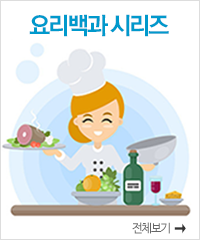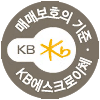ABSTRACT
Transmission of Cooking Knowledge and Modern Printed Cookbook : The Case of JoseonYoriJaebup and JoseonMussangSinsikYoriJaebup
Yeon Jae RA
Major in Anthropology·Folklore studies(Folklore)
The Graduate School of Korean Studies
The Academy of Korean Studies
A Thesis Advisor: Professor Joo Young-ha
Cookbook is often used as historical materials for the studies of food history, foodways, and food culture. Since studying cookbook is based on premise that recipes and cooking knowledge indicated contemporary culinary life when it had been written. However, previous research did not verified social cultural context of cookbook and the aspect of contained recipes’s transmission. The purpose of this study is to reconsider the concept and importance of cookbook and make cookbook as culinary folklore materials researching transmission of cooking knowledge revealed from cookbook through the case study of JoseonYoriJaebup (朝鮮料理製法) and JoseonMussangSinsikYoriJaebup .
First of all, due to the fact that ‘cookbook’ is not defined in the dictionary by National Institute of Korean Language, this study defined that cookbook is contained of recipes and it should have to consist of more than a half of recipes. The book that only consist of food ingredients and a few recipes could not belong to cookbook. To research the cookbook, this study proposed 4 types of cookbook as in the following.
1. manuscript or printed book
2. written letters (ex. Hangeul , Chinese character)
3. the kind of recipes
4. the narrative form
In the matter of studying cookbook, it can be divided into two aspects; one is the exterior form and sociocultural context and the other is the composition and recipes. As the book is a media that transmits knowledge to the reader, technology of publishing should be concerned in the study and should show how cookbook was formed by the author, publisher, marketer, advertisement, reader and so on. The composition of cookbook can have preface, contents, recipes, knowledge related to food and cooking. Especially about recipes, this study mainly focused on knowledge transmission through
literation.
It is as follows that summarizing the main point of researching JoseonYoriJaebup and JoseonMussangSinsikYoriJaebup.
1. Each versions of two books: JoseonYoriJaebup has 13 versions in 1910~1945, and JoseonMussangSinsikYoriJaebup has 3 versions in the same period. Each versions of JoseonYoriJaebup can be divided into 3 periods according to the revised contents. On the contrary, only few contents of JoseonMussangSinsikYoriJaebup had been revised.
2. The author and the copyrights: The author of JoseonYoriJaebup is Bang Shinyoung(1890~1977) who also own a copyright of the book. In contrast, the author and the copyright holder of the JoseonMussangSinsikYoriJhiaebup was different. The author of the book is Lee Yongki(1875~1933(?)) and the copyright holder is Kang Uiyoung(1894~1945). Therefore the lawsuit suing JoseonMussangSin sikYoriJhiaebup for the charge of infringing the copyright of JoseonYoriJaebup was held between Bang and Kang.
3. Publishing company: JoseonYoriJaebup had been published at 4 different publishing companies per version, and still Bang was the copyright holder. However, the copyright holder Kang was the owner of YeongChangSeoGwan, so JoseonMussangSinsikYoriJaebup had been published only in there.
4. The form, the class of readers and the purpose of the book through advertisement: Through examining advertisements of two books, the main target was female and particularly a housewife. JoseonYoriJaebup had been targeted ‘modern girls’(신여성) and students who went to girl’s school, but JoseonMussangSinsikYoriJaebup had been targeted ‘good and wise lady(양가숙 녀)’ in that time.
5. Recipes that show transmitting of the knowledge: Compared to previous cookbooks from Joseon period, this study discovered that plenty of recipes of two cookbooks is similar to other recipes contained in previous ones. There are few recipes JoseonYoriJaebup plagiarized from printed cookbook named
BuinPilji . According to Lee Seongwoo, the original of JoseonMussangSinsikYoriJaebup was ImwonGyeonjaeJi Jeongjo-Ji , however there are SanlimGyeongjae, JeoungboSanlimGyeonjae , JoseonYoriJaebup , NongjeongHuiyo or Junsaengpaljeon , SuweonSikdan which quite large amount of JoseonMussangSinsikYoriJaebup plagiarized from. In conclusion, this study analyzed the process of transmitting the recipes one book to another in three ways.
1. The feature of manuscript and printed book.
2. The choice of narrative by the author and the type of transmitting
3. The genealogy of knowledge transmission.
On account of printing technology, the knowledge of cooking transmitting through literation has been communicated to the public. The reader of the cookbook which consist of literated recipes from previous cookbook can experiment transmitted knowledge and the food can be revived by literacy not orality.
Consequently, this study criticizes the previous viewpoints that folk knowledge only can be transmitted by the orality and suggests knowledge transmission can be discovered in the point of written culture(literate culture). Also it criticizes the habitual routine using cookbook as materials in culinary folklore studies and suggests how to research the cookbooks in the perspective of sociocultural context and knowledge transmission through the case study of two modern printed cookbooks.
However this study did not interview the readers of this two cookbooks, reading method of the cookbook also could not have been investigated. There should be more field study and interview with readers for further research. Also it presents the possibility that can research another cookbooks in the perspective of knowledge transmission.
Keywords : Cookbook, Cooking knowledge, Bang Shinyoung, Lee Yongki, Kang Uiyong, JoseonYoriJaebup, JoseonMussangSinsikYoriJaebup, Modern printed cookbook, Literate culture, Literacy, Orality, Transmission of Knowledge, Secondary orality, The author, Publishing company, Modern printing technique, Plagiarism and Originality of cookbook, The reader, Housewife

 KFA(K-Food Archive) 약 100만여개 Big Data Project
KFA(K-Food Archive) 약 100만여개 Big Data Project






 통합검색
통합검색









 ABSTRACT
ABSTRACT •농촌진흥청 국립농업과학원 •한식진흥원 •전북음식플라자 •우석대학교 식품영영학 윤계순 교수 •호서대학교 식품영양학과 정혜경 교수 •경북대학교 국어국문학과 백두현교수
•농촌진흥청 국립농업과학원 •한식진흥원 •전북음식플라자 •우석대학교 식품영영학 윤계순 교수 •호서대학교 식품영양학과 정혜경 교수 •경북대학교 국어국문학과 백두현교수












